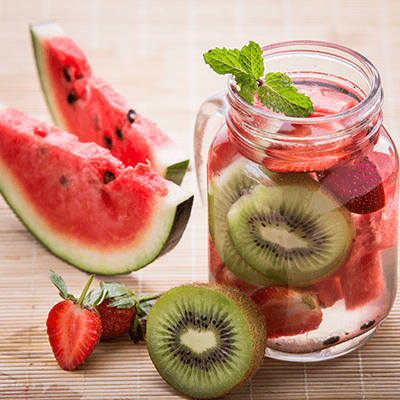5 simple ways to manage type 2 diabetes
Living with type 2 diabetes can feel like a balancing act, juggling many competing demands at once. But with the right habits and tools, you can live well with diabetes without getting overwhelmed. From meal planning to exercise to blood glucose monitoring, there are several simple steps you can take to ease your type 2 diabetes management. Start by learning about diabetes Whether you’re newly diagnosed or...
Read MoreUnderstanding Gestational Diabetes
What is it? Gestational diabetes (or “pregnancy diabetes”) affects between 3% and 20% of pregnant women. It generally occurs in the second or third trimester of the pregnancy and goes away on its own after childbirth. Any pregnant woman can develop it, but there are a number of risk factors such as age, ethnicity, excess weight, corticosteroid use, family history and some pre-existing conditions. What’s happening? Gestational diabetes...
Read MoreHyperglycemia
When there isn’t enough insulin in your body, or when the hormone becomes ineffective, your cells are unable to use the available glucose, which then builds up in the blood. Hyperglycemia occurs when glucose levels rise above target values, i.e.: Over 7 mmol/L fasting or before a meal Over 10 mmol/L two hours after a meal Chronic hyperglycemia is what causes the long-term complications of diabetes such as blood vessel and nerve damage, blindness and kidney failure. Signs Fatigue or drowsiness ...
Read More6 secrets to enjoying weddings (without your numbers going crazy)
If June is supposed to be wedding month, then why are all of your August weekends booked with stag and stagette dos, and nuptials from morning to night? The trend has shifted, with more Canadian weddings taking place in August than any other month.1 You've already seen advice on managing diabetes at weddings and parties, so we'll skip the obvious (eat before you go! drink water!). Instead, here are some ideas for having fun without regretting it an hour later (or the next morning). 1. Raise your Champagne glass! You don't have to skip alcohol just because you have diabetes. Just keep it in...
Read MoreStress: It’s Not All In Your Head!
When your body is under attack, or when it feels attacked, it will naturally have a fight or flight response, with the hormonal reaction this entails. Cortisol and adrenaline, among other hormones, increase glucose levels, which are quickly transported to cells to provide energy to the body. Diabetes causes insulin to not always play its role effectively, which can lead to hyperglycemia. However, if you’re living with type 1 diabetes, you are at risk of hypoglycemia. Breathe! To develop better defense mechanisms...
Read MoreDealing With Holiday Stress
During the Holidays, everything is turned upside down: you eat at random times, you sleep too little or too much. Then there are the last-minute gifts you need to buy, the long trips you need to make… And on top of it all, you still need to manage your diabetes! First and foremost: don’t panic. Stress affects your appetite as well as your blood sugar levels, so you’ll want to manage it. Target stressors and avoid them if at all possible. For example, do your gift shopping earlier during the year or order online instead of...
Read MoreTemptation Dead Ahead!
Yule log, chocolate cake, brown sugar fudge, gingerbread cookies… Resisting the holidays’ typical sweet treats can be quite a feat. But who said you have to forgo them entirely? Follow along! Plan for a healthy diet. Of course you are allowed to treat yourself. No need to hibernate until the holidays are over! It just means balancing the rest of your diet will be even more important; basically, make healthy choices most of the time. Pick your battles. It’s all about moderation. Decide which treats you want to indulge in ahead of time. Choose your favourites. For example...
Read MoreHot Hot Hot!
As nice as it is to bask in the sun, you still have to remain vigilant. Your blood sugar could rise with the thermometer and prevent your body from properly regulating its temperature. Result: you risk hyperthermia. What are the symptoms? Fatigue, dizziness, nausea, clammy skin, excessive sweating, muscle cramps and headaches are all common symptoms. Who is at risk? The body’s ability to regulate its temperature in young children is not yet developed, and is reduced in the elderly, which increases their risk of suffering from...
Read MoreHow to be more eco-friendly
Diabetes is by no means easy on the planet. It generates a lot of waste - for example, used lancets, product packaging and unused medications. That said, why not limit the damage by adopting more responsible practices in your everyday life? Here are a few easy tips to get started! Give pill bottles a second life. Most pill bottles are recyclable, but plastic number 6 sometimes isn’t (you’ll find this number on the bottom of the bottle, outlined by a recycling triangle). Another option: your empty containers are perfect for storing cotton swabs, loose change and...
Read MorePages
Understanding Gestational Diabetes
What is it? Gestational diabetes (or “pregnancy diabetes”) affects between 3% and 20% of pregnant women. It generally occurs in the second or third trimester of the pregnancy and goes away on its own after childbirth. Any pregnant woman can develop it, but there are a number of risk factors such as age, ethnicity, excess weight, corticosteroid use, family history and some pre-existing conditions. What’s happening? Gestational diabetes...
Read MoreHyperglycemia
When there isn’t enough insulin in your body, or when the hormone becomes ineffective, your cells are unable to use the available glucose, which then builds up in the blood. Hyperglycemia occurs when glucose levels rise above target values, i.e.: Over 7 mmol/L fasting or before a meal Over 10 mmol/L two hours after a meal Chronic hyperglycemia is what causes the long-term complications of diabetes such as blood vessel and nerve damage, blindness and kidney failure. Signs Fatigue or drowsiness ...
Read More6 secrets to enjoying weddings (without your numbers going crazy)
If June is supposed to be wedding month, then why are all of your August weekends booked with stag and stagette dos, and nuptials from morning to night? The trend has shifted, with more Canadian weddings taking place in August than any other month.1 You've already seen advice on managing diabetes at weddings and parties, so we'll skip the obvious (eat before you go! drink water!). Instead, here are some ideas for having fun without regretting it an hour later (or the next morning). 1. Raise your Champagne glass! You don't have to skip alcohol just because you have diabetes. Just keep it in...
Read MoreStress: It’s Not All In Your Head!
When your body is under attack, or when it feels attacked, it will naturally have a fight or flight response, with the hormonal reaction this entails. Cortisol and adrenaline, among other hormones, increase glucose levels, which are quickly transported to cells to provide energy to the body. Diabetes causes insulin to not always play its role effectively, which can lead to hyperglycemia. However, if you’re living with type 1 diabetes, you are at risk of hypoglycemia. Breathe! To develop better defense mechanisms...
Read MoreDealing With Holiday Stress
During the Holidays, everything is turned upside down: you eat at random times, you sleep too little or too much. Then there are the last-minute gifts you need to buy, the long trips you need to make… And on top of it all, you still need to manage your diabetes! First and foremost: don’t panic. Stress affects your appetite as well as your blood sugar levels, so you’ll want to manage it. Target stressors and avoid them if at all possible. For example, do your gift shopping earlier during the year or order online instead of...
Read MoreTemptation Dead Ahead!
Yule log, chocolate cake, brown sugar fudge, gingerbread cookies… Resisting the holidays’ typical sweet treats can be quite a feat. But who said you have to forgo them entirely? Follow along! Plan for a healthy diet. Of course you are allowed to treat yourself. No need to hibernate until the holidays are over! It just means balancing the rest of your diet will be even more important; basically, make healthy choices most of the time. Pick your battles. It’s all about moderation. Decide which treats you want to indulge in ahead of time. Choose your favourites. For example...
Read MoreHot Hot Hot!
As nice as it is to bask in the sun, you still have to remain vigilant. Your blood sugar could rise with the thermometer and prevent your body from properly regulating its temperature. Result: you risk hyperthermia. What are the symptoms? Fatigue, dizziness, nausea, clammy skin, excessive sweating, muscle cramps and headaches are all common symptoms. Who is at risk? The body’s ability to regulate its temperature in young children is not yet developed, and is reduced in the elderly, which increases their risk of suffering from...
Read MoreHow to be more eco-friendly
Diabetes is by no means easy on the planet. It generates a lot of waste - for example, used lancets, product packaging and unused medications. That said, why not limit the damage by adopting more responsible practices in your everyday life? Here are a few easy tips to get started! Give pill bottles a second life. Most pill bottles are recyclable, but plastic number 6 sometimes isn’t (you’ll find this number on the bottom of the bottle, outlined by a recycling triangle). Another option: your empty containers are perfect for storing cotton swabs, loose change and...
Read More








